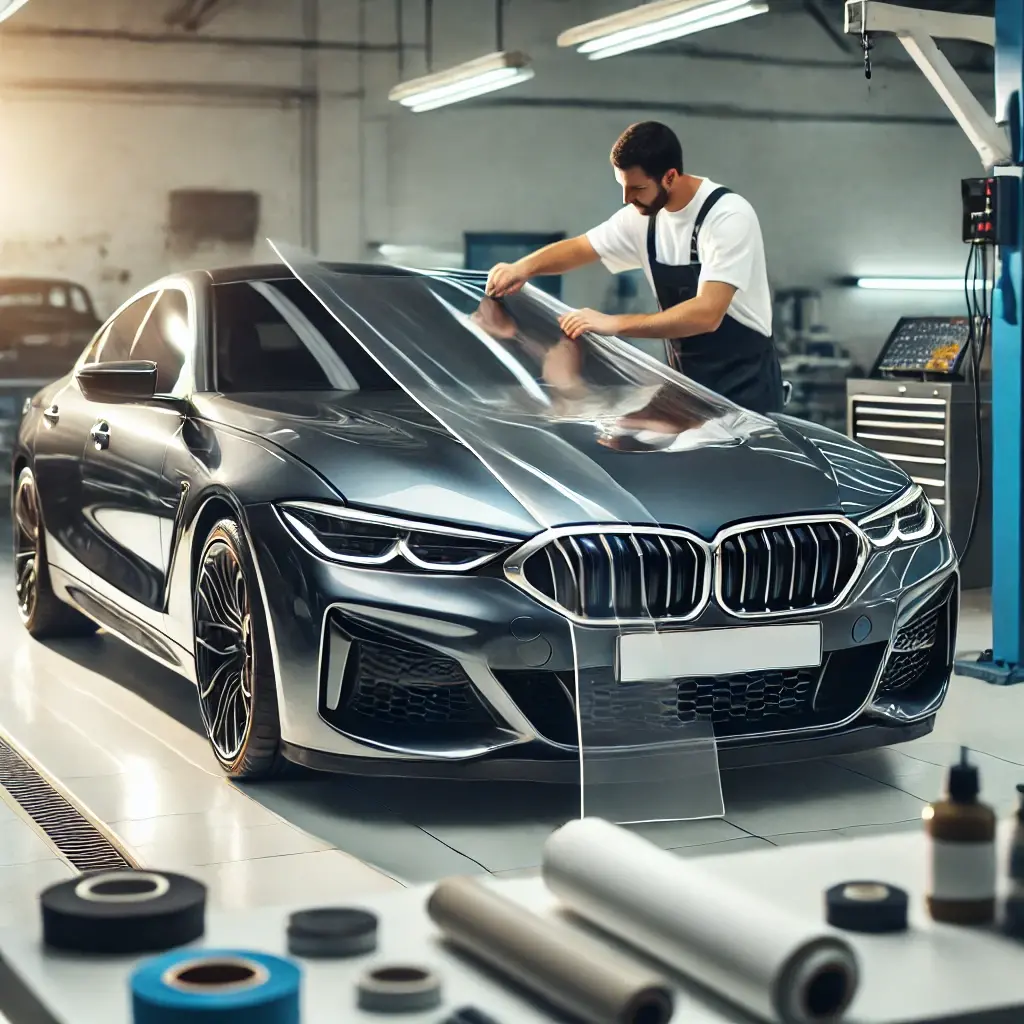The Ultimate Guide to Paint Protection Film (PPF): Benefits and Drawbacks

In exploring the realm of automotive care, Paint Protection Film (PPF) emerges as a sophisticated tool designed to extend the lifespan and aesthetics of a vehicle’s exterior. Known for its robust thermoplastic urethane material, PPF acts as a formidable shield against environmental aggressors such as rock chips, road debris, and UV degradation. While its merits, including self-healing properties and hydrophobic effects, are compelling, the investment and technical precision required in its application pose significant considerations. As we evaluate these factors, one must question whether the benefits of PPF provide sufficient value to outweigh its limitations, especially in contexts of varied environmental and usage conditions.
Benefits of Paint Protection Film
Paint Protection Film (PPF) offers significant benefits by acting as a durable barrier that shields automotive paint from scratches, environmental contaminants, and UV radiation. This advanced material, typically comprising thermoplastic urethane, is engineered to enhance the vehicle’s exterior resilience while maintaining its pristine condition.
Applied by professionals, PPF adheres seamlessly to the car’s contours, providing a virtually invisible layer of protection that does not alter the original paint aesthetics. The hydrophobic properties of the film ensure that water beads and rolls off the surface, minimizing water spots and aiding in easier cleaning.
Moreover, the self-healing technology intrinsic in high-quality PPF allows it to repair small scratches and swirls when exposed to heat, thus preserving the vehicle’s showroom finish. This feature is particularly invaluable for enthusiasts and collectors who see their vehicles as more than just transportation but as cherished possessions.
For those in our community who value long-term preservation of their vehicle’s appearance, PPF offers an investment that maintains higher resale values by protecting against the elements that typically degrade the paint over time. Additionally, many manufacturers provide a warranty for PPF, assuring vehicle owners of its durability and effectiveness in protecting their investment.
Drawbacks of Paint Protection Film
While Paint Protection Film offers numerous advantages, it is also associated with several limitations that potential users should consider. Here, we delve into the specific challenges one might encounter with PPF installation and long-term maintenance:
- Cost Effectiveness: Initial installation of high-quality PPF can be quite costly. This investment might be difficult to justify for owners of cars with lower market values or for those who do not intend to keep their vehicle long-term.
- Installation Skill Required: Proper application of PPF requires professional expertise. Incorrect installation can lead to bubbles, wrinkles, and misalignment, which not only detracts from the aesthetic appeal but can also diminish the protective efficacy.
- Longevity and Discoloration: Over time, some films may exhibit yellowing or become opaque, particularly if exposed to extensive UV radiation or harsh environmental conditions. This can necessitate premature replacement, adding to the overall cost of maintenance.
- Limited Protection: While PPF is excellent for guarding against scratches, chips, and minor abrasions, it is not invulnerable. High-impact damage from accidents or deep scratches from sharp objects can penetrate the film, requiring potentially costly repairs.
These considerations are crucial for those in our community who seek to maintain their vehicles’ pristine condition while managing expectations and investment wisely.
In conclusion, Paint Protection Film presents a paradoxical investment in automotive care. While it offers a shield against various forms of minor damage and maintains the aesthetic integrity of the vehicle, it simultaneously demands a substantial initial outlay and expert handling to avoid installation flaws.
Thus, the very technology designed to preserve a car’s pristine appearance can, through misapplication or aging, potentially mar it, highlighting the intricate balance between protective benefits and the complexities of its application and longevity.